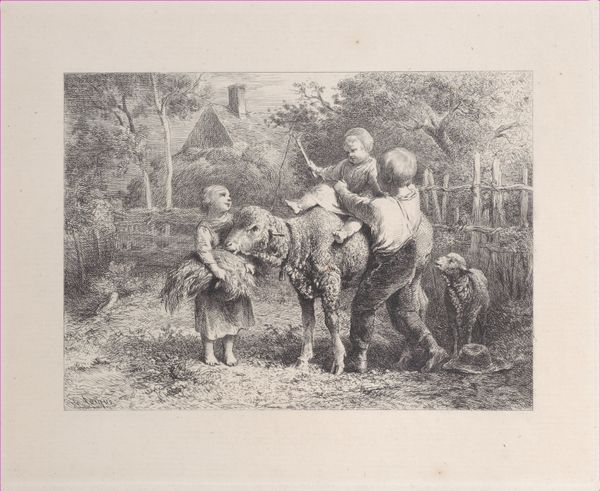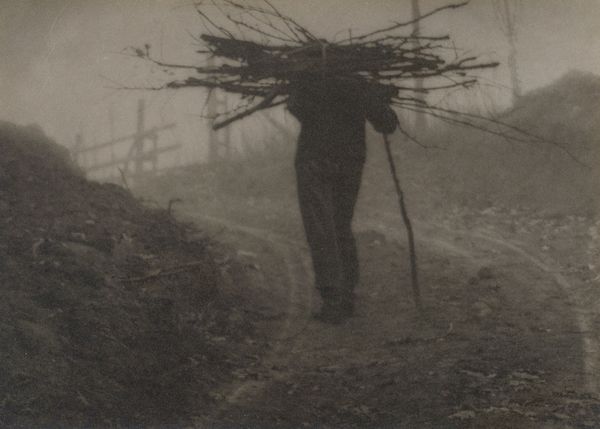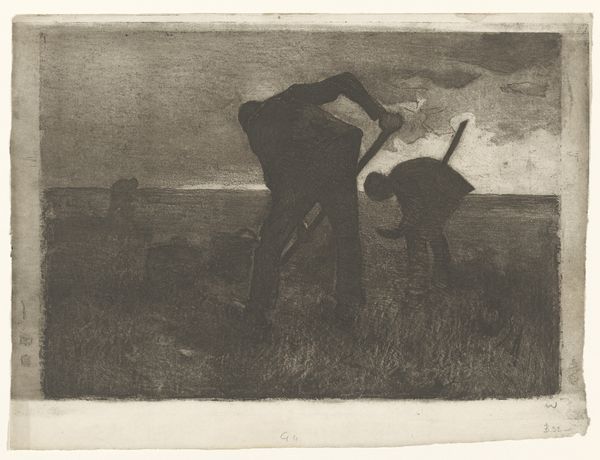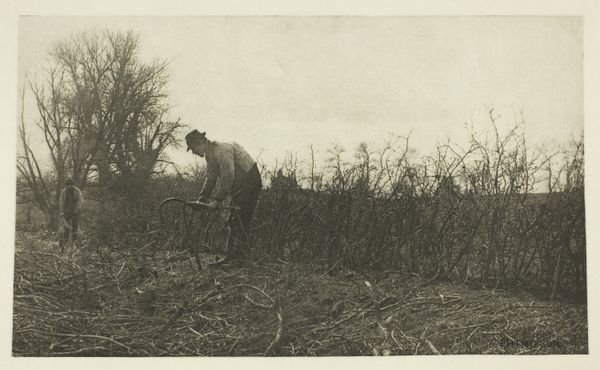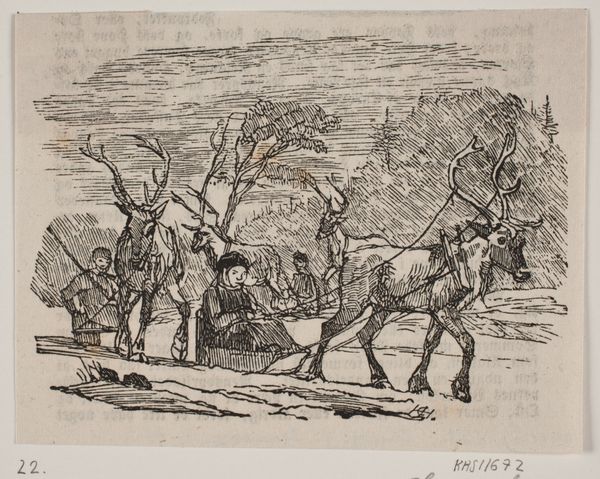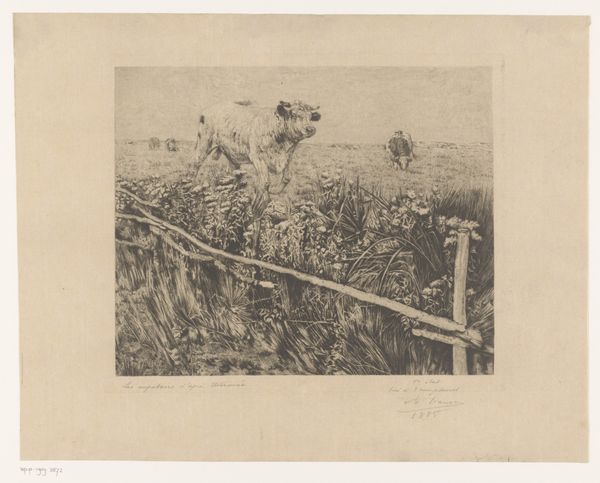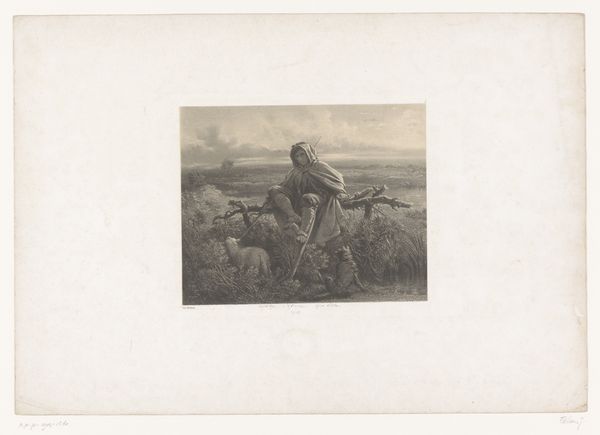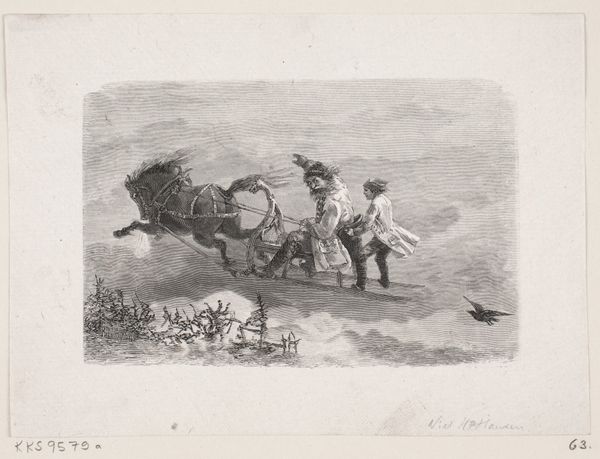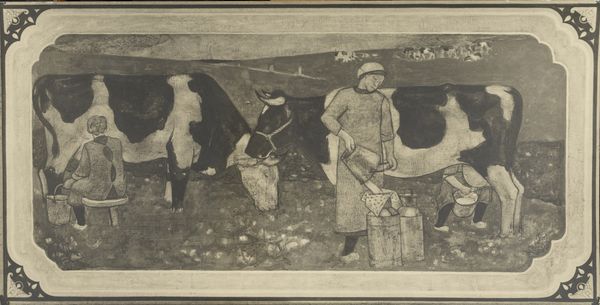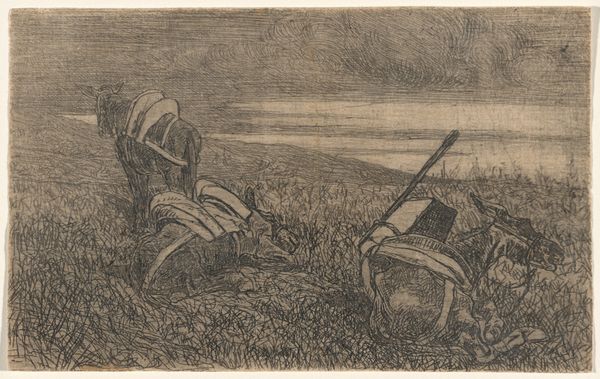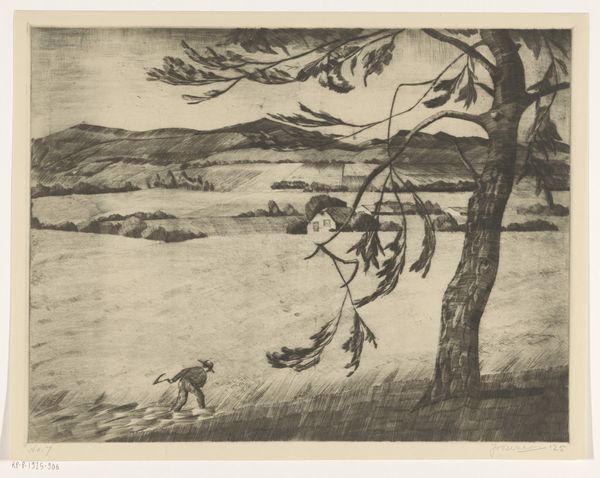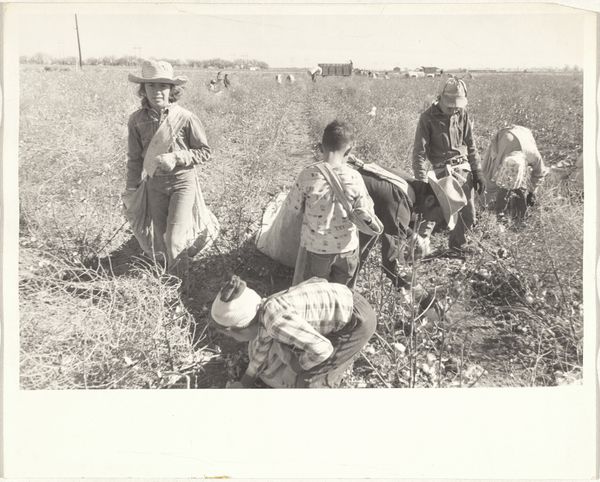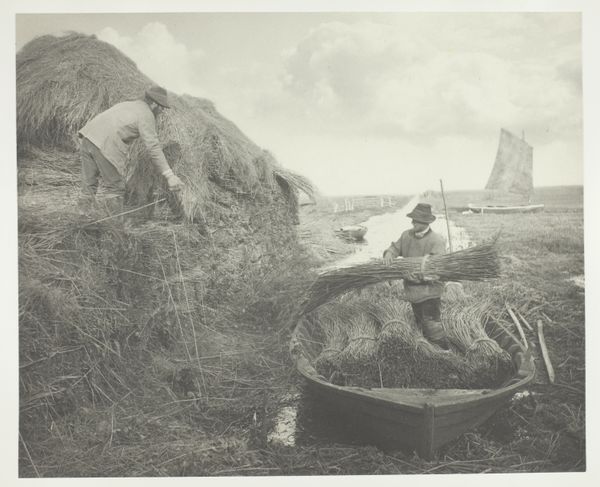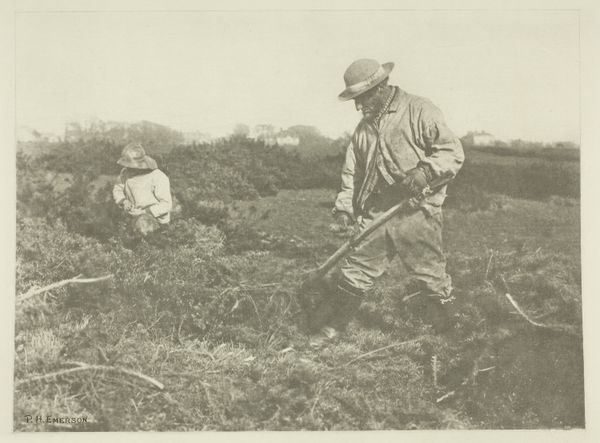
drawing, print, paper, ink, charcoal
#
drawing
# print
#
landscape
#
charcoal drawing
#
paper
#
ink
#
genre-painting
#
charcoal
#
realism
Dimensions: plate: 13.9 x 23 cm (5 1/2 x 9 1/16 in.) sheet: 24.9 x 34.8 cm (9 13/16 x 13 11/16 in.)
Copyright: National Gallery of Art: CC0 1.0
Editor: Here we have "Herbst," or "Autumn," a genre painting made in 1895 by Heinrich Zille using charcoal, ink, and print on paper. The figures are carrying what look like foraged goods; it's somber and industrious. What do you see in this piece, especially considering its time? Curator: This work speaks volumes about the socio-economic realities of late 19th-century Germany. Zille was known for his stark portrayals of working-class life in Berlin. The burdened figures suggest a narrative of survival, likely women and children gathering resources for sustenance as winter approaches. Consider the backbreaking labor involved. How does the landscape, almost oppressive, reflect the limited opportunities available to these individuals, especially women? Editor: It definitely feels like a struggle, but there’s a resilience too. Is it fair to say that Zille is almost making a political statement here? Curator: Absolutely. Zille's realism wasn't just about depicting what he saw, but about critiquing the societal structures that created these conditions. He gives visibility to those often ignored by the dominant narratives of his time. His work embodies the very concept of "art as activism", don't you think? What are the power structures being revealed in this work? Editor: The contrast between the figures weighed down by their burdens and the seemingly endless field highlights their vulnerability, but also their labor... it highlights, too, that someone must do this difficult labor to survive. Thank you, this has made me see how social commentary can be woven so powerfully into art. Curator: And it serves as a crucial reminder that art can—and should—prompt us to question the status quo and advocate for a more just world. Thinking about labor in art offers rich insights.
Comments
No comments
Be the first to comment and join the conversation on the ultimate creative platform.
